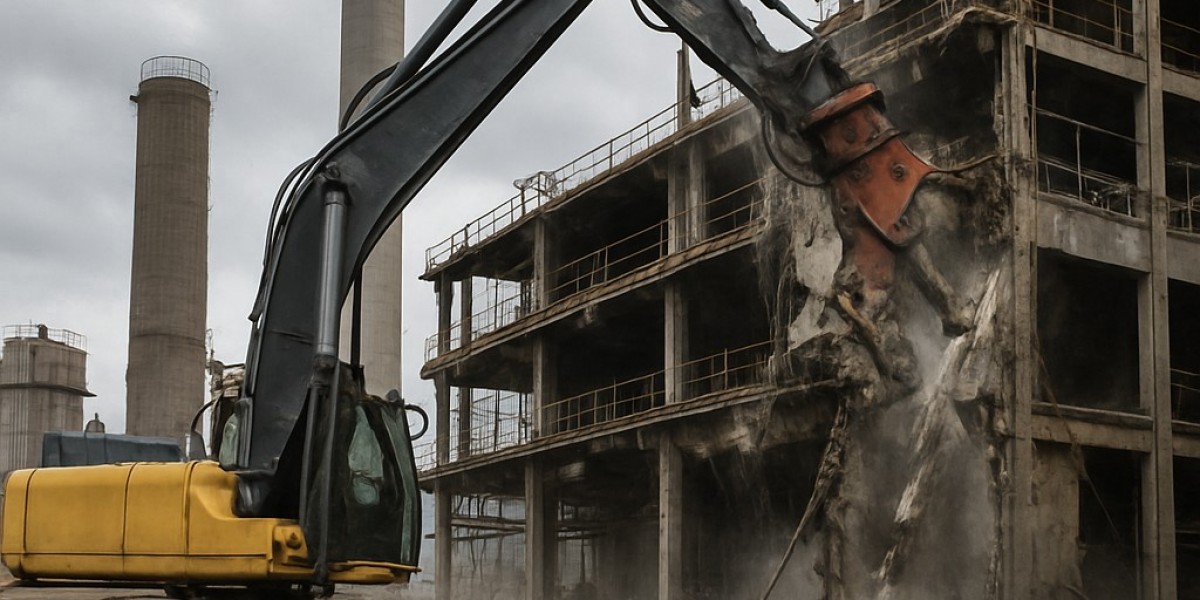Industrial demolition is a critical service within the construction and engineering industries, providing the expertise and precision required to safely dismantle, decommission, and remove large-scale industrial structures. Whether it’s an obsolete manufacturing plant, an aging power station, or a decommissioned refinery, industrial demolition services play a pivotal role in preparing sites for redevelopment, mitigating environmental hazards, and ensuring safety and compliance.
What Are Industrial Demolition Services?
Industrial demolition services refer to the planned and controlled process of dismantling industrial buildings and infrastructure. Unlike residential or commercial demolition, industrial projects involve complex systems, hazardous materials, heavy-duty equipment, and a high level of risk. These services are typically required when a facility has reached the end of its operational life or when a company needs to repurpose land for new development.
Common structures targeted for industrial demolition include:
Power plants (coal, nuclear, hydroelectric)
Steel mills and foundries
Manufacturing plants and warehouses
Oil refineries and petrochemical plants
Water treatment facilities
Pulp and paper mills
Key Components of Industrial Demolition
1. Site Assessment and Planning
Every demolition project begins with a detailed site assessment. This involves surveying the site, identifying hazardous materials such as asbestos or lead, analyzing structural integrity, and developing a customized demolition plan. Engineers and project managers evaluate potential risks and determine the safest and most cost-effective methods for demolition.
2. Environmental and Regulatory Compliance
Industrial demolition projects must adhere to strict environmental regulations. This includes the proper handling and disposal of hazardous materials, emissions control, noise reduction, and soil or groundwater contamination prevention. Obtaining the necessary permits and ensuring compliance with OSHA, EPA, and local government standards is a vital step in the process.
3. Decontamination and Hazardous Material Abatement
Many industrial sites contain toxic or dangerous substances that must be handled by certified professionals. Services often include:
Asbestos abatement
Lead paint removal
Chemical residue cleanup
PCB (polychlorinated biphenyl) removal
Tank decommissioning and cleaning
Decontamination ensures that both the demolition crew and the surrounding community are protected from exposure to harmful substances.
4. Structural Demolition
Once decontamination is complete, structural demolition can begin. Depending on the structure’s size and composition, various techniques are employed:
Mechanical demolition using excavators, bulldozers, wrecking balls, and cranes
Explosive demolition (implosion), used for tall or heavily reinforced structures
Selective demolition, where only specific parts of the structure are removed
Safety is paramount during this stage, and it’s typically supported by real-time monitoring and emergency response plans.
5. Salvage and Recycling
An essential part of modern industrial demolition is the recovery of reusable or recyclable materials. These may include:
Structural steel and metal
Concrete and brick (crushed for reuse)
Electrical wiring and components
Wood and plastic materials
Recycling not only reduces waste and environmental impact but can also offset project costs.
6. Site Remediation and Restoration
After the demolition is completed, the site is cleared of debris and prepared for its next phase of use. This may involve:
Soil testing and remediation
Ground leveling and grading
Erosion control
Seeding or landscaping
In some cases, industrial sites are transformed into commercial developments, green spaces, or new manufacturing facilities.
Challenges in Industrial Demolition
Industrial demolition is inherently more complex than other types of demolition due to several factors:
Scale and complexity of structures and machinery
Presence of hazardous materials requiring specialized removal
Operational constraints, especially if demolition occurs near active industrial sites
Community and environmental concerns, particularly in urban areas
Logistical issues, such as equipment access, transportation, and waste disposal
To address these challenges, contractors must have specialized knowledge, cutting-edge equipment, and a commitment to safety and sustainability.
Why Hire Professional Industrial Demolition Contractors?
Hiring a professional industrial demolition contractor is essential for ensuring a safe, efficient, and legally compliant project. Here’s what qualified contractors bring to the table:
Certified and experienced workforce
Advanced demolition equipment and technology
Strict adherence to safety protocols
Comprehensive project management
Environmental remediation capabilities
Insurance and liability coverage
Professional contractors work closely with engineers, environmental consultants, and regulatory bodies to minimize risks and deliver successful outcomes.
The Future of Industrial Demolition
As industries evolve and the demand for sustainable redevelopment grows, the field of industrial demolition is also transforming. Emerging trends include:
Robotic and remote-controlled demolition tools for increased safety
Green demolition practices focused on zero-waste goals
3D modeling and simulation for more accurate project planning
Advanced material separation technologies to improve recycling rates
These innovations are making demolition safer, more efficient, and more environmentally responsible.
Conclusion
Industrial demolition services are a cornerstone of modern infrastructure redevelopment. By safely dismantling outdated or unsafe structures, these services pave the way for innovation, economic growth, and environmental restoration. Whether decommissioning a power plant or clearing space for a new industrial complex, choosing the right demolition partner is crucial to the success of any project.






